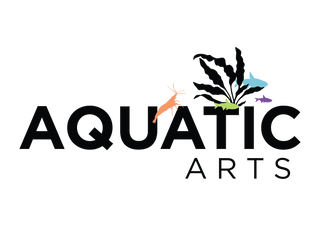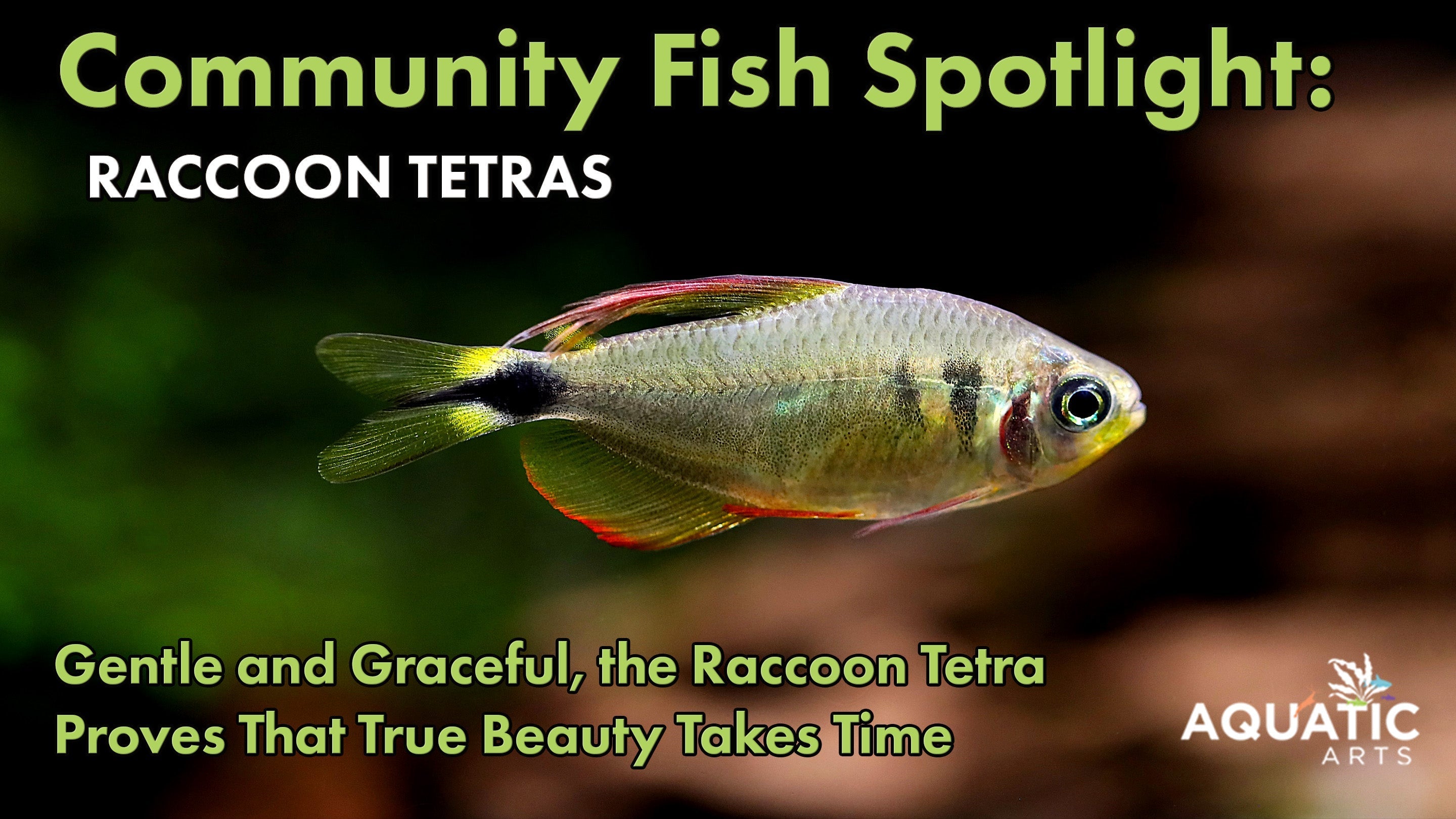The Role of Biofilm in Breeding Fish and Invertebrates
The Role of Biofilm in Breeding Fish and Invertebrates
Biofilm is often viewed as an unsightly byproduct of aquariums, but did you know it plays a crucial role in breeding fish and invertebrates? Many aquarists, especially those focused on breeding, may overlook the importance of biofilm, but this natural layer of microorganisms can be the secret to providing the optimal environment for your aquatic pets.
In this article, we’ll explore how biofilm supports breeding in fish and invertebrates and why fostering a healthy biofilm in your tank is essential for successful reproduction. We’ll also guide you to two other important reads about biofilm: The Benefits of Biofilm for Shrimp and Fish: A Natural Food Source and Natural Biofilm Promoters: Using Leaves, Botanicals, and Driftwood in Your Aquarium, where you can dive deeper into the role of biofilm in your aquarium's ecosystem.
How Biofilm Supports Breeding
1. Natural Food Source for Fry and Larvae
When fish or invertebrates reproduce, their offspring are often too small to eat traditional food sources. Biofilm, however, provides a rich, natural food source for newly hatched fry and larvae. This layer of microorganisms contains essential nutrients that support the early stages of growth. For species like shrimp, which are born as tiny, delicate creatures, biofilm is particularly crucial. It ensures that they have access to easily accessible, high-quality nutrition from the moment they are born, reducing the need for supplemental feeding.
The benefits of biofilm as a natural food source are highlighted in The Benefits of Biofilm for Shrimp and Fish: A Natural Food Source, where you'll find a comprehensive look at how biofilm helps maintain a thriving, self-sustaining environment for aquatic species.
2. Safe Environment for Fry and Juveniles
Biofilm does more than just provide food—it also creates a safe environment for fish and invertebrate fry. The surfaces where biofilm grows, such as driftwood, rocks, and plants, provide hiding places for young fish and shrimp. These surfaces act as shelters, helping protect them from predators and reducing stress in the early, vulnerable stages of their lives.
By using natural materials like leaves, botanicals, and driftwood, you not only promote biofilm growth but also provide essential cover for juvenile fish and shrimp. To learn more about the best natural materials for promoting biofilm, check out Natural Biofilm Promoters: Using Leaves, Botanicals, and Driftwood in Your Aquarium, which discusses how to create an ideal breeding environment.
Biofilm for Breeding Invertebrates
Shrimp and snails are particularly reliant on biofilm for their breeding success. Biofilm not only feeds shrimp fry but also creates a supportive micro-ecosystem that sustains their development. For snails, the presence of biofilm helps in shell formation and maintenance, providing them with essential nutrients.
Additionally, shrimp are known to graze on biofilm constantly. This helps female shrimp recover after laying eggs and ensures they stay in peak condition for subsequent breeding cycles. The importance of biofilm for shrimp health and breeding is underscored in The Benefits of Biofilm for Shrimp and Fish: A Natural Food Source, making it a vital component for any breeding tank.
Promoting Biofilm for Breeding Success
To ensure successful breeding, it’s important to foster biofilm growth in your aquarium. One of the easiest ways to promote biofilm is by adding natural materials such as Indian Almond Leaves, driftwood, and seed pods to your tank. These materials not only enhance the aesthetic but also provide surfaces for biofilm to grow. Over time, these items break down, releasing organic material that helps sustain biofilm populations.
For more detailed guidance on how to promote biofilm in your aquarium, take a look at Natural Biofilm Promoters: Using Leaves, Botanicals, and Driftwood in Your Aquarium. The article covers the best materials and techniques for encouraging biofilm growth, which will help you create the perfect environment for breeding fish and invertebrates.
Q&A Section: Common Questions About Biofilm and Breeding in Aquariums
Q: How does biofilm support the breeding of fish and invertebrates?
A: Biofilm serves as a critical food source for newly hatched fry and larvae, offering essential nutrients that help them grow. It also provides shelter for young fish and invertebrates by growing on surfaces like driftwood and plants, creating a safer environment for them to hide from predators. This makes it particularly important in breeding tanks for species like shrimp, which heavily rely on biofilm for both food and protection.
Q: Why is biofilm especially important for shrimp breeding?
A: Shrimp fry are tiny and delicate, making biofilm a perfect food source as it’s easy for them to consume. Adult shrimp also graze on biofilm, which helps them recover after laying eggs. It creates a balanced ecosystem that supports both adult shrimp and their offspring, ensuring successful breeding cycles.
Q: Can I control biofilm growth to benefit breeding efforts in my tank?
A: Yes, biofilm can be encouraged by adding natural materials such as Indian Almond Leaves, driftwood, and seed pods, which promote the growth of biofilm. These items offer surfaces for biofilm to develop while releasing organic compounds that feed the microorganisms forming the biofilm. Managing water conditions and avoiding over-cleaning can also help maintain a healthy level of biofilm.
Q: How long does it take for biofilm to form in a breeding tank?
A: Biofilm typically begins to form within a few days to a couple of weeks, depending on the surfaces available and the water conditions. Driftwood, botanicals, and leaves promote quicker biofilm growth, creating a more suitable environment for breeding fish and invertebrates.
Q: Is biofilm harmful to fish or invertebrates?
A: No, biofilm is not harmful and, in fact, benefits fish and invertebrates. It provides a natural source of food, especially for species like shrimp, snails, and algae-eating fish. However, excessive biofilm could indicate poor water quality or excess organic matter in the tank, so regular tank maintenance is important to prevent this.
Q: What materials can I add to my tank to encourage biofilm growth for breeding?
A: Natural materials like Indian Almond Leaves, driftwood, alder cones, and seed pods are excellent for promoting biofilm. As these materials decompose, they provide nutrients that foster the growth of biofilm, making them ideal for a breeding tank environment.
Q: Do live plants help with biofilm formation in breeding tanks?
A: Yes, live plants contribute to biofilm growth. As they decompose, they release nutrients that microorganisms feed on, helping to sustain biofilm. Mosses like Java Moss are particularly beneficial as they provide extensive surface area for biofilm to grow and create hiding places for fry and larvae.
Q: Can biofilm aid in fry survival in a community tank?
A: Yes, biofilm can help fry survive in a community tank by providing a natural and constant food source. Additionally, the surfaces where biofilm grows, like plants and driftwood, offer safe hiding places for fry, reducing their exposure to predators.
Q: How do I prevent biofilm from overwhelming the tank while still benefiting breeding?
A: You can control biofilm growth by introducing species that feed on it, such as shrimp and snails. Additionally, regular tank maintenance like water changes and lightly cleaning surfaces will prevent excessive buildup. However, avoid completely removing biofilm as it plays a key role in the breeding process.
Q: How can I learn more about biofilm and its benefits for breeding fish and invertebrates?
A: To learn more about biofilm’s role in aquatic ecosystems and breeding, check out these two articles: The Benefits of Biofilm for Shrimp and Fish: A Natural Food Source and Natural Biofilm Promoters: Using Leaves, Botanicals, and Driftwood in Your Aquarium. They offer detailed insights into how biofilm supports the health of aquatic life and how you can foster it in your tank.




